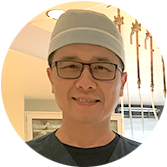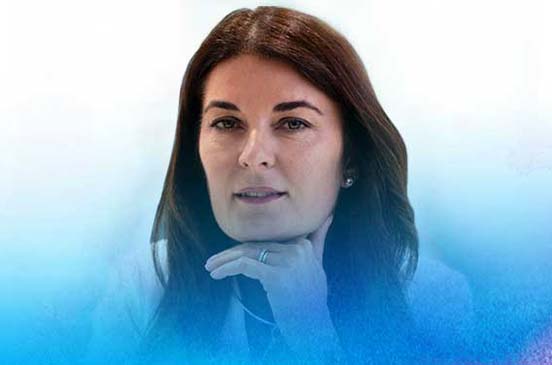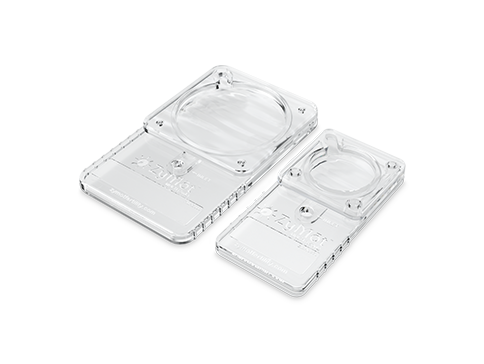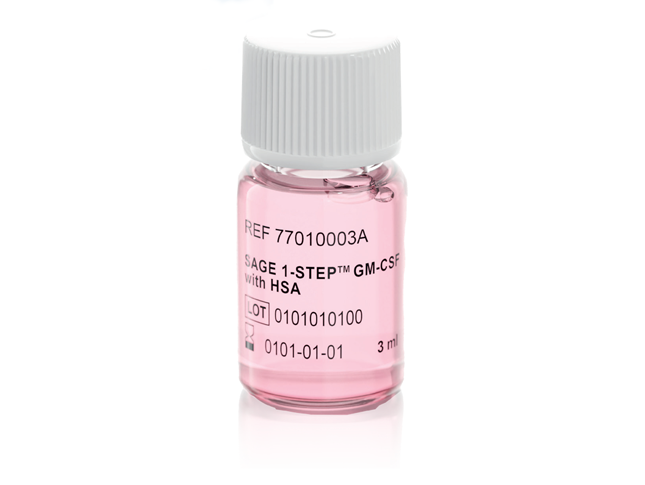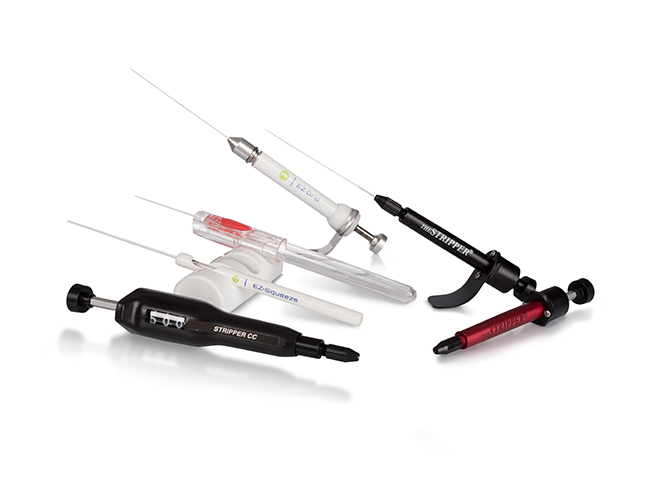A scientific conversation with Zsolt Peter Nagy, Scientific and Laboratory Director and embryologist Jeremy Chang from Reproductive Biology Associates (RBA) in Atlanta, USA
The world of cryopreservation has progressed in the last two decades in part from the advancement of vitrification, a process which increases the possibility of successful cryo-freezing and warming of reproductive samples. We spoke with Dr. Nagy and Dr. Chang about how vitrification has empowered patients with more fertility treatment options and how flexibility in vitrification protocols is essential to ensure reliable and consistent clinical outcomes in IVF labs.
Dr. Zsolt Peter Nagy is the Scientific and Laboratory Director at Reproductive Biology Associates (RBA), in Atlanta, USA since 2002. Dr. Nagy is certified as a High-complexity Clinical Laboratory Director (HCLD) by the American Board of Bioanalysis (ABB).
Dr. Jeremy Chang is currently an embryologist at Reproductive Biology Associates, Atlanta, USA. Dr. Chang’s main research interests lie in the areas of oocyte biology and epigenetic reprogramming.
How has the field of cryopreservation evolved?
Dr. Nagy: Since the first successful cryopreserved embryo that resulted in pregnancy in 1983 and the first successful cryopreserved oocytes in 1986, there have been many success stories. The initial method of slow freezing worked to some extent for sperm and embryo cryopreservation, but it didn’t work very well for oocyte cryopreservation. With the introduction of a new process called vitrification about 20 years ago, the efficiency of cryopreservation improved, and survival rates increased.
Today, we have an even higher cryopreservation efficiency due to better protocols and better products and see a survival rate for embryos and oocytes at around 95% and above. These are exciting outcomes for us in the fertility care industry and also, of course, for our patients, prompting an increased demand for elective single Frozen Embryo Transfer (e-FET), oocyte donation, social oocyte freezing, etc.
Can those previously slow-frozen samples be thawed using vitrification?
Dr. Chang: Since the typical storage period for embryos can be up to 10 years, patients are fortunate that the modern vitrification kits are very effective for warming the slow-frozen samples that are currently in storage. In the future, those slow-frozen samples may also have the advantage of artificial intelligence (AI) and automation for even better outcomes.
“These are exciting outcomes for us in the fertility care industry and also,
of course, for our patients…” – Dr. Nagy
What role does standardization play in cryopreservation efficiency?
Dr. Nagy: Anyone working in a fertility lab already understands that it is a very special environment with lots of responsibilities, with protocols and procedures that need to be followed. Due to the delicateness of vitrifying and warming of oocytes, sperm and embryos, cryopreservation techniques must be very precise. Therefore, cryopreservation efficiency is also strongly linked to standardization, but with the flexibility of adjustment to continue fine-tuning protocols for stable clinical outcomes.
Dr. Chang: We will always search for the simplest and most effective protocols and choose the kits that work to help us achieve that. A lab may modify their protocols based on their experiences; therefore, each lab has its own preferred protocols to follow. For example, testing the media batches, creating optimal environmental factors such as room temperature and humidity and also evaluating operator outcomes help us create the optimal lab environment.
“We will always search for the simplest and most effective protocols and choose the kits that work to help us achieve that.” – Dr. Chang
How important is the human factor for clinical outcomes?
Dr. Chang: There are many factors we can control that can affect the final outcomes but for the human factor, we need to rely on utilizing our data to pinpoint our clinic’s specific changes. In that way, optimization is unique to each lab and goes back to standardization. An operator’s techniques may vary slightly, so to ensure stability before, during and after vitrification protocols, we conduct Q&A sessions to understand as much as we can about the operator, timelines and outcomes.
For the vitrification process, the universal warming concept is very good because then we know everyone is using the same protocol. Currently, there is no fixed optimal volume, therefore in order to increase the buffer area or the safe zone, we prefer to increase the volume for vitrification and warming to avoid human error or handling issues. We need this flexibility when we focus more on human training, so that we can make these decisions based on what’s best for our clinical outcomes.
How has vitrification changed fertility treatment options for patients?
Dr. Nagy: As medical professionals, we not only want to help patients achieve their goals but ensure that patients get to make an informed choice for the best patient fertility journey. Fertility preservation or social freezing, cryopreserving sperm or eggs until a later point in life, is starting to be a more common occurrence today. It is a great choice as a part of an assisted fertilization treatment plan with ovarian stimulation, and oocyte or embryo cryopreservation for women choosing to postpone pregnancy for personal reasons and for patients with severe illnesses undergoing such treatments as chemotherapy, radiotherapy or for other medical reasons. Vitrification helps save the patient’s fertility and that’s something we’re proud to be able to offer.
“Vitrification helps save the patient’s fertility and that’s something we’re proud to be able to offer.” – Dr. Nagy
How can we help communicate cryopreservation better to patients?
Dr. Nagy: Taking the time to educate patients and raising awareness around the benefits of cryopreservation are extremely important. In our scientific review article, Vitrification of the human embryo: a more efficient and safer in vitro fertilization treatment * we list three significant benefits to vitrification that we should highlight to the public: increased viability or survival rates as I already mentioned with cryopreservation efficiency, improved pregnancy rates due to ideal cryo-survival and optimized uterine receptivity/synchrony and improved safety for patient and baby due to more transfers.
Dr. Chang: In our lab, ten to fifteen percent of cryopreservation is social freezing. A lot of these patients come to RBA with basic knowledge from online sources, so we need to make sure the right resources are available to anyone interested in fertility preservation. Most of our patients appreciate and will take our suggestions. All patients have put their trust in us for the best fertility treatment plan including cryopreservation options, so it’s our responsibility to provide the best support we can to help fulfill their dreams of parenthood.
“All patients have put their trust in us…so it’s our responsibility to provide the best support we can to help fulfill their dreams of parenthood.” – Dr. Chang
What is your vision for the future of cryopreservation?
Dr. Nagy: At RBA, our team was one of the very first teams in the world to develop our own vitrification protocols. Back in 2005, when vitrification was still brand new, there were no cryo solutions or tools for vitrification, so we had to prepare our own vitrification and warming solutions from different ingredients in the lab. Vitrification has come a long way.
When you have 95% efficiency with vitrification it’s hard to develop further, but of course, we’d love to have 100% efficiency. We want to continue to offer our patients the best chances for success and that comes down to further improving the standardization of laboratory protocols and techniques combined with the best cryopreservation products that support the goal to achieve reliable and consistent outcomes.
“We want to continue to offer our patients the best chances for success…with the best cryopreservation products that support the goal to achieve reliable and consistent outcomes.” – Dr. Nagy
Dr. Chang: As I mentioned earlier, I believe the introduction of AI and automation connected to cryopreservation protocols will be a significant innovation, introducing the possibility of even more simplified protocols and tailoring to individual protocols for each oocyte and each embryo. Another aspiration would be the ability to share this type of data within clinics and across clinic groups and even globally. Opening access to optimized clinical protocols would help improve laboratory standards and the fertility journey for clinics and patients around the world.
References:
* Nagy, Z.P., Shapiro, D., and Chang, C. Vitrification of the human embryo: a more efficient and safer in vitro fertilization treatment. Fertility and Sterility, 2020. 113(2): p. 241-247.241 – 247.



